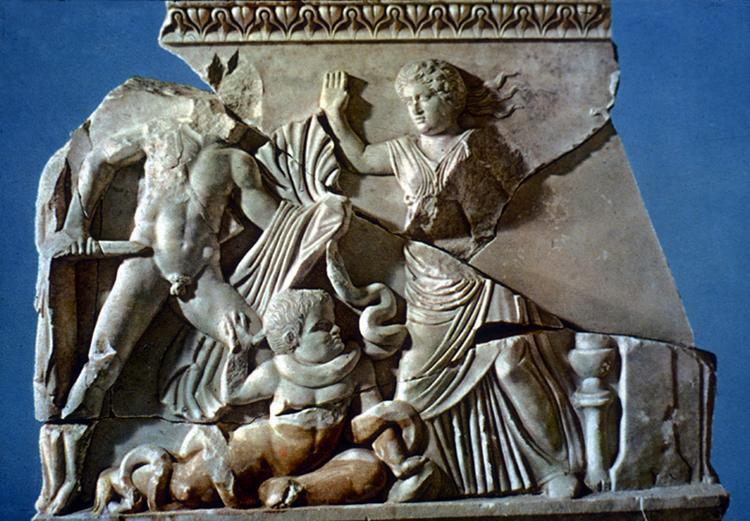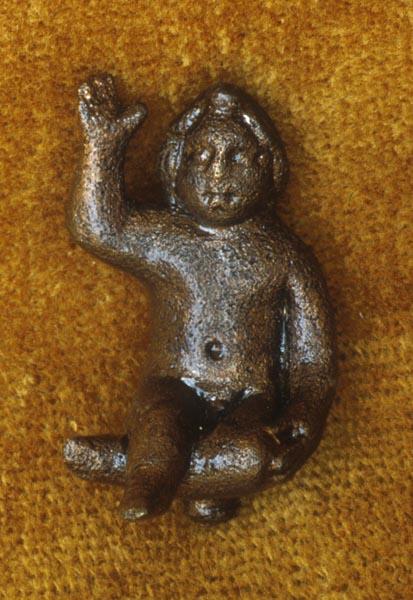
Upon his return to Nemea, Lykourgos assigned a slave woman, Hypsipyle, to care for his son. Sometime thereafter, the Seven Against Thebes passed through Nemea from Argos on their ill-fated mission. When they asked Hypsipyle for something to drink, she placed Opheltes on a bed of wild celery where he was killed by a serpent, thus fulfilling the prophecy. The Seven renamed the baby Archemoros (Beginner-of-doom), and held the first Nemean Games as funerary games in his memory. The story is depicted on a Roman period sarcophagus from Corinth.
Vestiges of these origins could be seen at the site of Nemea in the form of a Shrine of Opheltes (where a bronze figurine of the baby was discovered) and a Sacred Grove of cypress trees.


Crown of wild celery